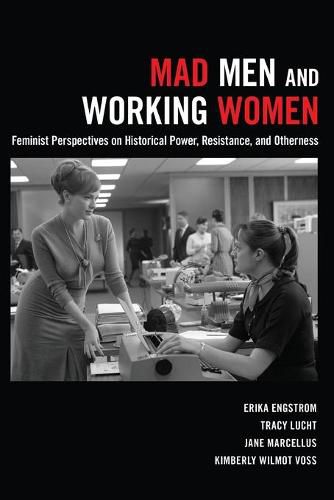Readings Newsletter
Become a Readings Member to make your shopping experience even easier.
Sign in or sign up for free!
You’re not far away from qualifying for FREE standard shipping within Australia
You’ve qualified for FREE standard shipping within Australia
The cart is loading…






This title is printed to order. This book may have been self-published. If so, we cannot guarantee the quality of the content. In the main most books will have gone through the editing process however some may not. We therefore suggest that you be aware of this before ordering this book. If in doubt check either the author or publisher’s details as we are unable to accept any returns unless they are faulty. Please contact us if you have any questions.
This book was featured as one of thirty-four Epic Feminist Books in Teen Vogue magazine.
This book offers interpretive and contextual tools to read the AMC television series Mad Men, providing a much-needed historical explanation and exposition regarding the status of women in an era that has been painted as pre- or non-feminist. In chapters aimed at helping readers understand women’s lives in the 1960s, Mad Men is used as a springboard to explore and discover alternative ways of seeing women. Offering more than a discussion of the show itself, the book offers historical insight for thinking about serious issues that modern working women continue to face today: balancing their work and personal lives, competing with other women, and controlling their own bodies and reproductive choices. Rather than critiquing the show for portraying women as victims, the book shows subtle (and sometimes not-so-subtle) ways that feminism functioned in an era when women were supposedly caught between the waves of the women’s movement but when, the authors argue, they functioned nonetheless as empowered individuals.
By doing so, it provides historical context and analysis that complicates traditional interpretations by (1) exploring historical constructions of women’s work; (2) unpacking feminist and non-feminist discourses surrounding that work; (3) identifying modes of resistance; and (4) revisiting forgotten work coded as feminine.
$9.00 standard shipping within Australia
FREE standard shipping within Australia for orders over $100.00
Express & International shipping calculated at checkout
This title is printed to order. This book may have been self-published. If so, we cannot guarantee the quality of the content. In the main most books will have gone through the editing process however some may not. We therefore suggest that you be aware of this before ordering this book. If in doubt check either the author or publisher’s details as we are unable to accept any returns unless they are faulty. Please contact us if you have any questions.
This book was featured as one of thirty-four Epic Feminist Books in Teen Vogue magazine.
This book offers interpretive and contextual tools to read the AMC television series Mad Men, providing a much-needed historical explanation and exposition regarding the status of women in an era that has been painted as pre- or non-feminist. In chapters aimed at helping readers understand women’s lives in the 1960s, Mad Men is used as a springboard to explore and discover alternative ways of seeing women. Offering more than a discussion of the show itself, the book offers historical insight for thinking about serious issues that modern working women continue to face today: balancing their work and personal lives, competing with other women, and controlling their own bodies and reproductive choices. Rather than critiquing the show for portraying women as victims, the book shows subtle (and sometimes not-so-subtle) ways that feminism functioned in an era when women were supposedly caught between the waves of the women’s movement but when, the authors argue, they functioned nonetheless as empowered individuals.
By doing so, it provides historical context and analysis that complicates traditional interpretations by (1) exploring historical constructions of women’s work; (2) unpacking feminist and non-feminist discourses surrounding that work; (3) identifying modes of resistance; and (4) revisiting forgotten work coded as feminine.